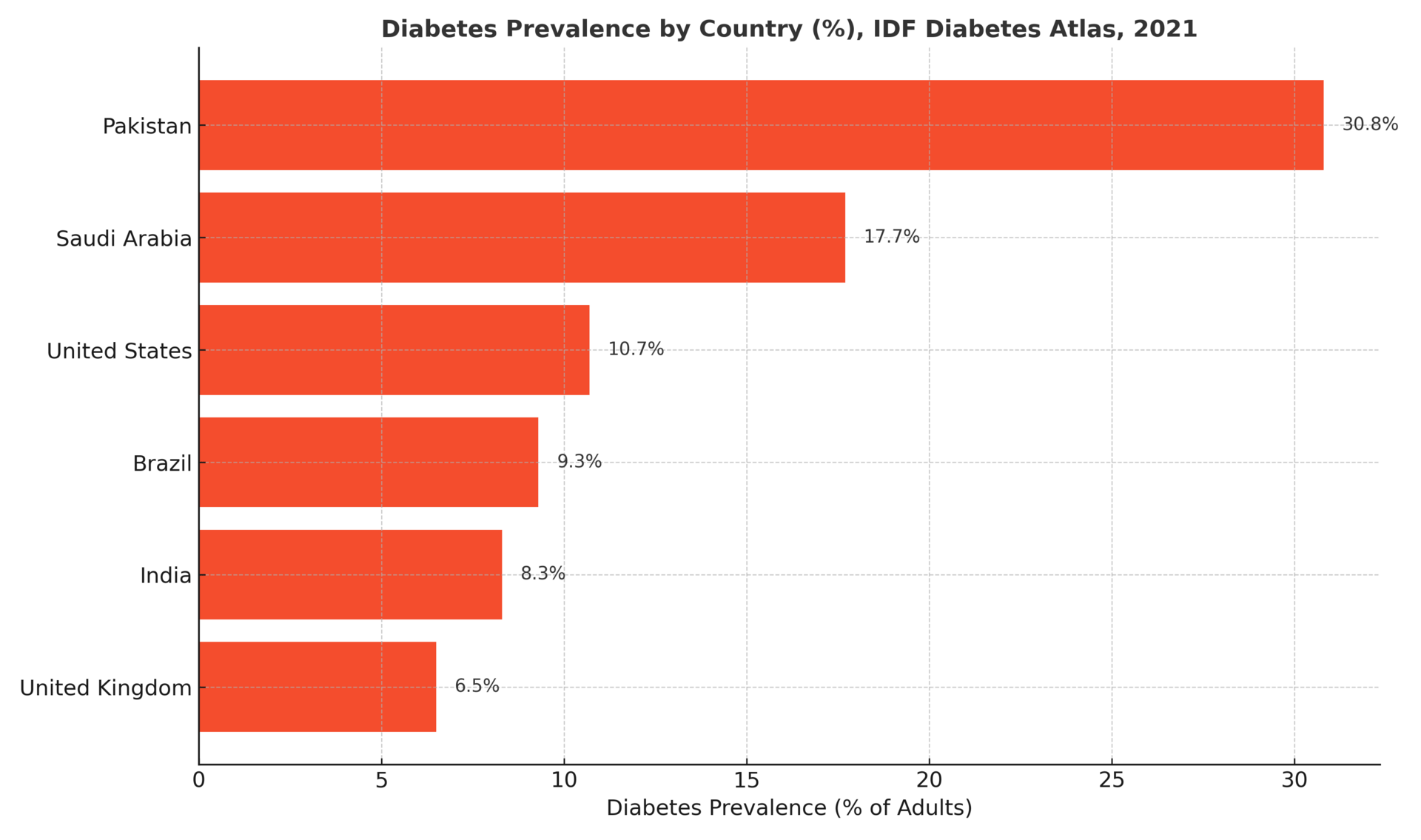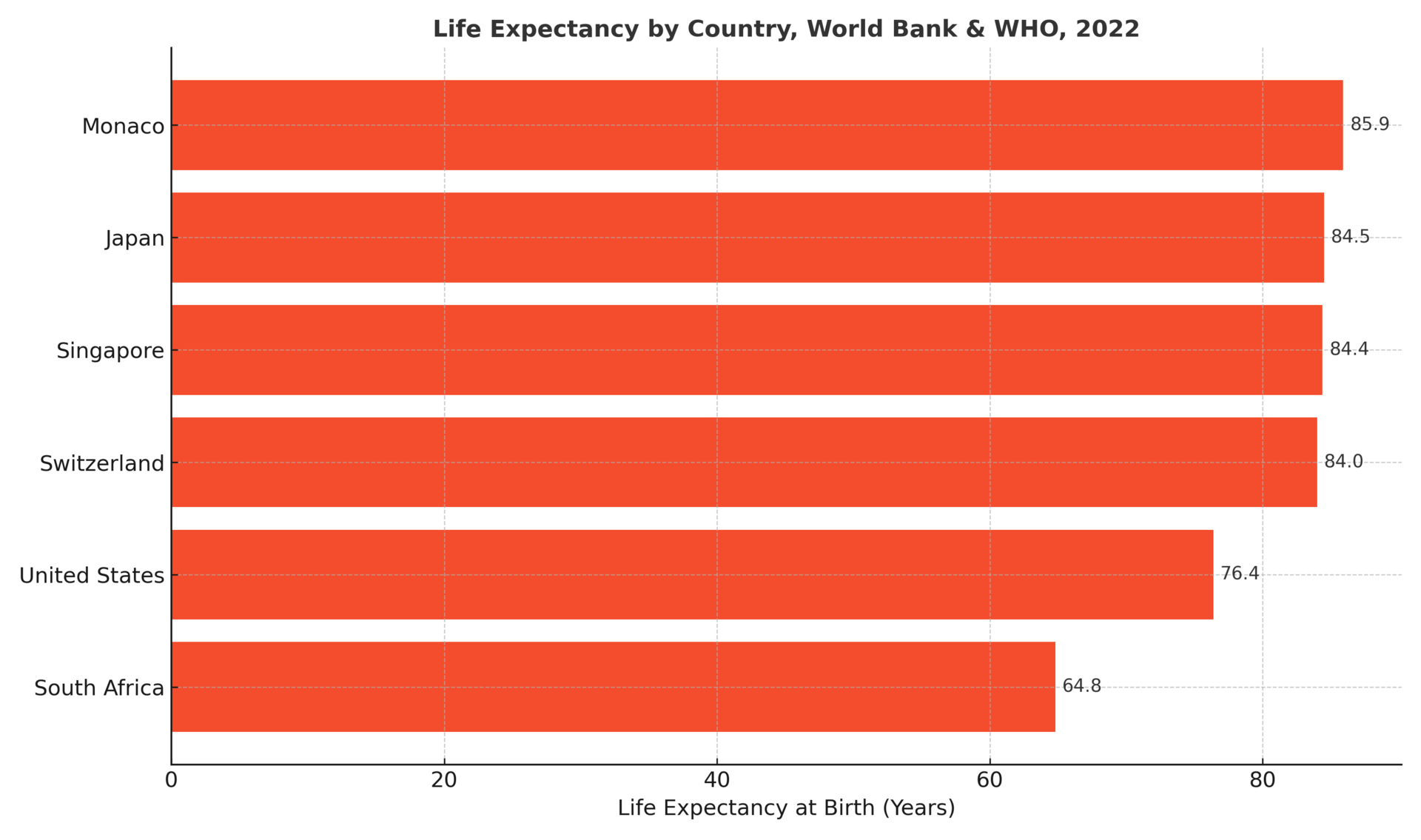- World Population Review Newsletter
- Posts
- The Hidden Health Advantages of Moving Abroad
The Hidden Health Advantages of Moving Abroad
Explore the countries where lifestyle meets longevity—and why it works.
Greetings, sharp-eyed seeker of health and advantage,
Chronic illness is quietly redrawing the map of the modern world. It’s not just about hospitals — it’s about where you’ll live longer, feel better, and protect those you love.
This edition unpacks the global rise (and fall) of obesity, diabetes, and heart disease — and how these trends could shape your next big decision.
Let’s dive into the data that’s reshaping destinies.
Hands Down Some Of The Best 0% Intro APR Credit Cards
Balance Transfer cards can help you pay off high-interest debt faster. The FinanceBuzz editors reviewed dozens of cards with 0% intro APR offers for balance transfers and found the perfect cards.
Take a look at this article to find out how you can pay no interest on balance transfers until 2027 with these top cards.
The traditional narrative has long pointed to the U.S. as the global capital of obesity — and while still true, the geography is shifting.
🔵 United States: With an obesity rate over 42%, the U.S. remains at the forefront of the crisis. But more troubling is the rise in childhood obesity, now affecting 1 in 5 kids — a generational warning sign.
🟠 Mexico: Just south of the border, obesity has surged to 30% among adults. Sugary drink consumption plays a big role — Mexico is one of the world’s largest consumers of soda per capita.
🔴 Turkey: A perhaps surprising entrant, Turkey now has the highest obesity rate in Europe (nearly 33%). Urbanization and fast food are accelerating the issue faster than public health policies can keep up.
🧠 Did you know? Obesity-related diseases account for nearly 70% of all healthcare spending in high-income countries. This shapes not just health outcomes, but national budgets and taxpayer priorities.

Diabetes — especially Type 2 — is tightly linked to lifestyle and environment. Its rise is accelerating globally, but some nations are experiencing particularly sharp increases.
🇸🇦 Saudi Arabia has one of the highest diabetes rates in the world, with over 17% of adults affected. Sedentary lifestyles and dietary shifts post-oil boom have made it a national crisis.
🇮🇳 India now ranks second globally in diabetes cases, with over 77 million adults affected. Urban migration and processed food consumption are key drivers — with major implications for a strained healthcare system.
🇺🇸 United States: Here too, the numbers are staggering — over 37 million people live with diabetes, a full 11% of the population. Minority communities are especially vulnerable due to disparities in access and prevention.
📊 Eye-opener: According to WHO, the global cost of diabetes in lost productivity and treatment is over $825 billion annually.

Heart disease remains the world’s top killer, but its geography has evolved. While many high-income nations are lowering death rates, others are just entering the crisis stage.
🇯🇵 Japan maintains one of the world’s lowest heart disease mortality rates, thanks to a diet rich in fish, vegetables, and portion control — plus an ingrained culture of movement.
🇺🇸 United States: Here, heart disease is still the leading cause of death, with over 695,000 deaths per year. Yet, rates are slowly improving thanks to prevention campaigns and statin use.
🇰🇿 Kazakhstan and several Central Asian nations have seen rising rates — tied to tobacco, alcohol, and the rapid adoption of Western diets amid economic growth.
💡 Fascinating fact: Mediterranean countries with olive oil–rich diets have up to 30% lower rates of heart-related death compared to Northern Europe.

Crash Expert: “This Looks Like 1929” → 70,000 Hedging Here
Mark Spitznagel, who made $1B in a single day during the 2015 flash crash, warns markets are mimicking 1929. Yeah, just another oracle spouting gloom and doom, right?
Vanguard and Goldman Sachs forecast just 5% and 3% annual S&P returns respectively for the next decade (2024-2034).
Bonds? Not much better.
Enough warning signals—what’s something investors can actually do to diversify this week?
Almost no one knows this, but postwar and contemporary art appreciated 11.2% annually with near-zero correlation to equities from 1995–2024, according to Masterworks Data.
And sure… billionaires like Bezos and Gates can make headlines at auction, but what about the rest of us?
Masterworks makes it possible to invest in legendary artworks by Banksy, Basquiat, Picasso, and more – without spending millions.
23 exits. Net annualized returns like 17.6%, 17.8%, and 21.5%. $1.2 billion invested.
Shares in new offerings can sell quickly but…
*Past performance is not indicative of future returns. Important Reg A disclosures: masterworks.com/cd.
Life expectancy is a reflection of chronic illness management — and some countries are defying the odds.
🇲🇨 Monaco leads the world in longevity with an average life expectancy of over 89 years. Beyond healthcare access, wealth concentration and Mediterranean lifestyle play key roles.
🇸🇬 Singapore’s highly efficient healthcare system, aggressive screening programs, and public health incentives have pushed its life expectancy to 85 years — despite a dense urban setting.
🇨🇭 Switzerland balances public and private healthcare, clean environments, and strong economic indicators to land in the global top tier.
🧬 Unusual insight: Access to preventive care alone accounts for up to 40% of the difference in life expectancy between rich and poor countries — more than genetics.

Some nations are bucking the trend and reversing chronic illness patterns — and their playbooks are worth noting.
🇨🇱 Chile implemented one of the world’s strongest front-of-package warning label systems on food. As a result, consumption of sugary drinks dropped by over 20% in just one year.
🇫🇷 France has managed to keep obesity relatively low (around 17%) through a combination of food culture, school lunches, and daily physical activity — despite high bread and cheese consumption.
🇰🇷 South Korea is increasingly investing in tech-driven public health, using wearables, AI-driven diet tracking, and mobile clinics to monitor citizens’ risk factors.
📉 Health policy milestone: Chile’s warning label law is now being adopted by other nations across Latin America — a new model for fast-impact reform.

While some countries make strides, others are facing a surge in chronic illness under the radar.
🇪🇬 Egypt has one of the fastest-growing rates of diabetes in the world, expected to hit 13 million cases by 2030. A growing youth population is at risk due to processed foods and low activity levels.
🇵🇭 Philippines: Rapid urbanization, sedentary jobs, and fast-food culture are fueling a rise in obesity and related diseases — but public health campaigns remain underfunded.
🇿🇦 South Africa faces a triple burden: rising chronic illness alongside infectious diseases like HIV. Obesity in women has reached 41% — among the highest globally.
📊 Global wake-up: The number of adults living with obesity worldwide has tripled since 1975 — a trend now accelerating in low- and middle-income countries.

So how does this global health map affect your decisions?
🏡 Relocation: For retirees or digital nomads, consider nations with longer life expectancies, lower obesity rates, and strong preventive care — like Japan, Singapore, or Portugal.
💰 Investment: As chronic illness reshapes global priorities, the demand for healthcare innovation — from diagnostics to healthy foods — is skyrocketing. The wellness economy is projected to hit $7 trillion by 2025.
🧠 Lifestyle: Regardless of location, individual actions matter. Countries that succeed in fighting chronic illness do so through systems, yes — but also habits: walking culture, nutrient-rich meals, and regular checkups.
🚀 Future signal: In the next decade, AI-driven personalized health is expected to reduce chronic illness risks by up to 30% through early detection and tailored plans.

Chronic illness isn’t just a health issue — it’s a force quietly shaping where people live, work, and thrive.
Knowing where the risks rise — and where they fall — helps you plan smarter: for your health, your family, and your future.
Stay sharp. Stay mobile. Let the data lead.
Warm regards,
Shane Fulmer
Founder, WorldPopulationReview.com
P.S. Want to sponsor this newsletter? Reach 139,000+ global-minded readers — click here!


